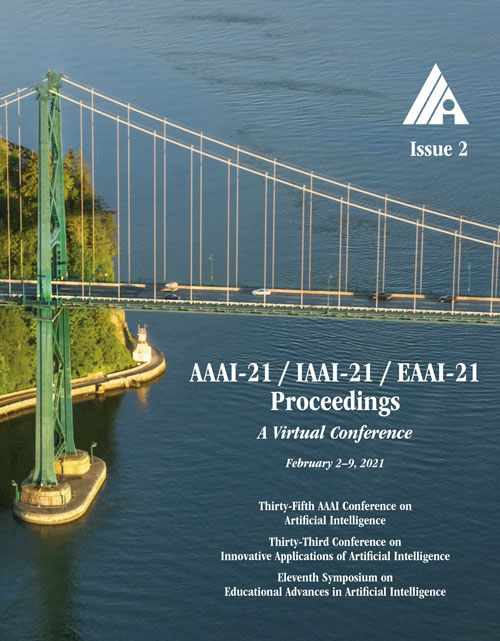Edge-competing Pathological Liver Vessel Segmentation with Limited Labels
DOI:
https://doi.org/10.1609/aaai.v35i2.16221Keywords:
Segmentation, (Deep) Neural Network AlgorithmsAbstract
The microvascular invasion (MVI) is a major prognostic factor in hepatocellular carcinoma, which is one of the malignant tumors with the highest mortality rate. The diagnosis of MVI needs discovering the vessels that contain hepatocellular carcinoma cells and counting their number in each vessel, which depends heavily on experiences of the doctor, is largely subjective and time-consuming. However, there is no algorithm as yet tailored for the MVI detection from pathological images. This paper collects the first pathological liver image dataset containing $522$ whole slide images with labels of vessels, MVI, and hepatocellular carcinoma grades. The first and essential step for the automatic diagnosis of MVI is the accurate segmentation of vessels. The unique characteristics of pathological liver images, such as super-large size, multi-scale vessel, and blurred vessel edges, make the accurate vessel segmentation challenging. Based on the collected dataset, we propose an Edge-competing Vessel Segmentation Network (EVS-Net), which contains a segmentation network and two edge segmentation discriminators. The segmentation network, combined with an edge-aware self-supervision mechanism, is devised to conduct vessel segmentation with limited labeled patches. Meanwhile, two discriminators are introduced to distinguish whether the segmented vessel and background contain residual features in an adversarial manner. In the training stage, two discriminators are devised to compete for the predicted position of edges. Exhaustive experiments demonstrate that, with only limited labeled patches, EVS-Net achieves a close performance of fully supervised methods, which provides a convenient tool for the pathological liver vessel segmentation. Code is publicly available at https://github.com/wang97zh/EVS-Net.Downloads
Published
2021-05-18
How to Cite
Feng, Z., Wang, Z., Wang, X., Zhang, X., Cheng, L., Lei, J., Wang, Y., & Song, M. (2021). Edge-competing Pathological Liver Vessel Segmentation with Limited Labels. Proceedings of the AAAI Conference on Artificial Intelligence, 35(2), 1325-1333. https://doi.org/10.1609/aaai.v35i2.16221
Issue
Section
AAAI Technical Track on Computer Vision I

